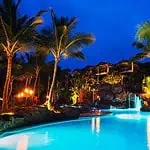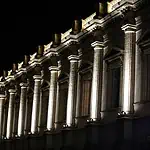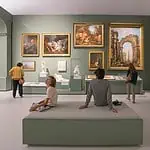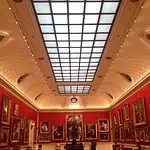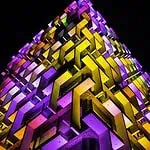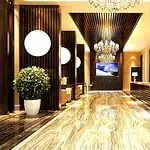After the art, lighting is the most important for any exhibition. It is vital enough to make or break the entire event. The types of lights you install in the art gallery will dramatically affect the drawings and paintings in the exhibitions. While great lighting will improve the value of the exhibition, a bad one will make the art pieces look dull and boring. You must understand the importance of lighting in an art gallery and the steps you can take to ensure it never lets you down.
We have compiled this guide specifically for you if you are wondering how to light an art gallery. So, let’s get to it.
Importance of Art Gallery Lighting
To understand how important lighting is in an art gallery, you must know that the function of lighting goes far beyond just the illumination of a place. You can create different vibes, impact the moods of visitors, and enhance the aesthetics of the place just by installing the right lighting systems. Several factors, including color temperature, color rendering index, and the dimensions of an art gallery, among others, must be considered. Going wrong with either of them can profoundly affect the overall outlook of the art gallery.
Several studies have shown the link between light conditions and the performance of an art gallery. Each lighting technique uniquely affects the painting and artwork, influencing the visitors’ perception. To understand the effect of lighting, purchase a painting and view it under the standard lights of your home. Then take that same painting to an area that is well-lit and shows every detail of the artwork. You will realize the importance of it.
Lighting is essential for an art gallery because it provides structure, improves depth, and highlights its culture. Without proper lighting, the viewers will not see the details in the structures and may not understand the idea an artwork is trying to project. Decent lighting should allow the viewers to distinguish between black and white in such detail that each shade of color is visible.
Furthermore, the lighting brings life to the artwork and offers it a three-dimensional outlook. You can opt for designs to cast shadows, highlight different elements of the artwork, and do many other things to portray the art exactly how you want to.
Lastly, while all the artwork displayed in the gallery might not be yours, you would still want to project your personality in your gallery. You can turn the gallery into a piece of art with different types of lighting. You can provide a unique look that leaves a long-lasting impression on the visitors.
Types of LED for Gallery Lighting
Hopefully, you have understood the importance of art gallery lighting, but what are the options out there? Well! There is a load of options you can pick from, but we recommend sticking with the LEDs, and for good reasons. First, they reduce energy consumption by almost 80% compared to traditional incandescent bulbs. And secondly, there are so many options in the LEDs that you can reproduce exactly what is in your mind.
The popular LED types of art galleries include:
1. Track Lights
Track lights work best when you want to avoid light fixtures being everywhere. It allows you to create a minimalist design that looks great in art galleries. Furthermore, track lights also have a cooler color temperature that creates a cozy and welcoming environment.
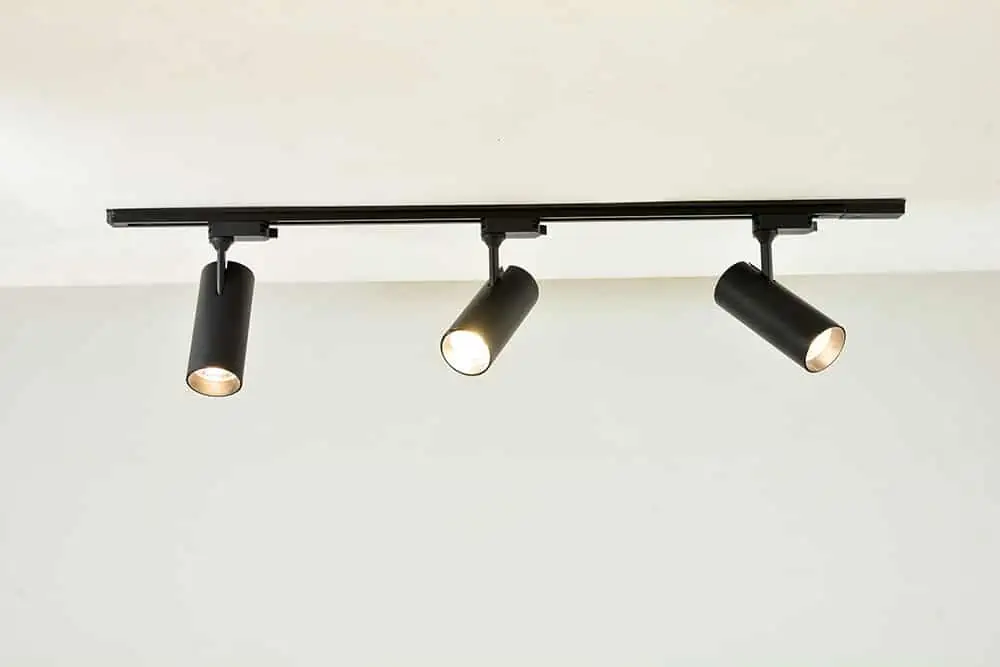
2. Recessed Lights
Recessed lights create an illusion that ceilings are higher than they actually are. It makes the gallery more welcoming and attracts more visitors.
3. Surface-Mounted LED Downlights
You can mount these LEDs on any surface, including walls and ceilings. The most significant advantage of these lights is they do not produce any glare, which makes investment in an SMD system worth it. You can mount them on the walls opposite the artwork, and you would not experience a reflection or glare in the paintings.
4. Wall Washers
In situations when you do not want to illuminate all parts of the gallery, wall washers work the best. These fixtures also ensure that direct light does not fall on any of the artwork on display.
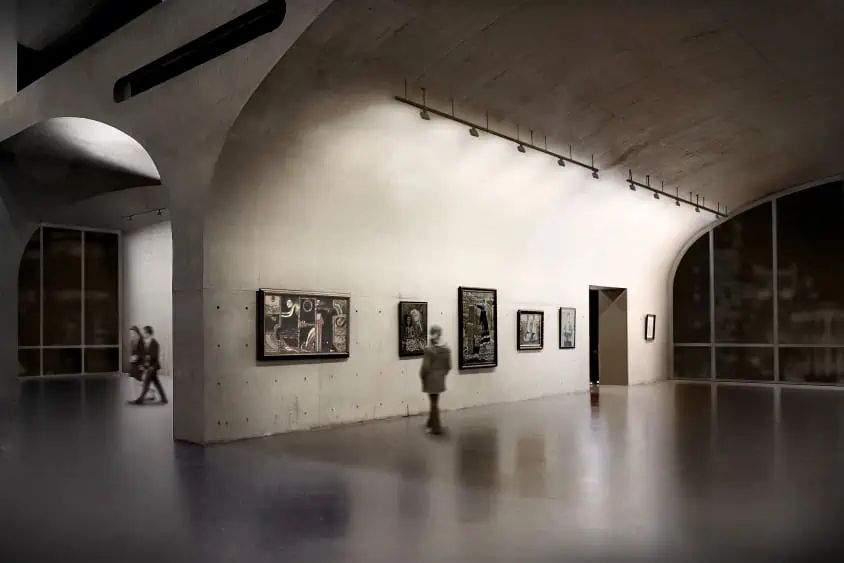
5. Spotlights
Spotlights project a concentrated light beam on a particular object or area. It is typically installed on the exhibition’s highlights to draw more attention to it. Although these lights are relatively expensive, they create a truly remarkable outlook.
Things To Know Before Choosing Fixtures For Art Gallery
You now know everything about the basics of lighting an art gallery. However, to light an exhibition perfectly, there are some more factors that you must know. Let’s take a look at them.
1. You Must Pick the Right Fixtures
While there are several types of bulbs that you can use in art galleries, including incandescent and halogen, you should stick with the LEDs, as discussed earlier. However, even within LEDs, there is a range of options. Each type of LED fixture has a unique effect and must be used in the place it is designed for. We have discussed some of the popular fixtures above, but that is not just it. There are several other options as well that must be explored to pick a suitable one for the gallery.
In addition, the fitting of fixtures must be considered as well. You should pick a fixture that is easy to replace for ease of maintenance. Replacing a malfunctioning fixture should not take more than a couple of minutes, which can be ensured by looking for fitting while getting a lighting solution.
2. Fixtures Should Be Adaptable
As an art gallery owner, you will display several types of art, ranging from paintings to sculptures. The light requirements for different types of art will be different, and if you have installed a solution that can offer just one style, it will not suffice. Thus, you should look for adaptability to ensure you never run into such a problem. The market offers a variety of versatile LED fixtures, including a smart one, which can be controlled remotely to change color, brightness, and even color temperature.
3. Always Go With Combinations
The lighting style should not be monotonous, as it can make the place look dull and boring. It does not necessarily mean you have to install multicolor lights in the gallery. You just have to ensure that each part of the gallery projects a unique style. With the variety of fixtures on the market, you can achieve that without needing to go for multicolor lights. For example, one part of the gallery can be lighted using a lantern, while another will probably benefit more from a spotlight.
The point is you have to find a combination that works the best. It will also make the lighting adaptable, which we discussed previously.
4. Understand different metrics of light
Each fixture has a unique color temperature, lumen output, and CRI. You must understand all three of them to find the most suitable solution. Lumen is the measure of how bright the light is and is easy to understand. The higher the lumens, the brighter the light.
However, it is more complex with the CRI and color temperature. CRI stands for Color Rendering Index and measures how closely a fixture’s light mimics the natural light. It is measured on a scale ranging from 0-100. The bulb with higher CRI will closely mimic natural light and make the object underneath it look exactly how it will look under sunlight.
You do not necessarily have to get a bulb with a higher CRI. Some parts of the gallery will look better with the CRI. You just have to figure out the CRI for different areas based on the lighting design in your mind.
Similarly, color temperature is an important parameter representing the color of light emitted from a bulb. Like the CRI, it is measured on a scale known as the kelvin scale, which ranges from 1,000 to 10,000. The bulbs with low color temperatures emit a warmer white light, while the higher ones offer a day-like type of cool light. Again, you have to figure out the requirements of the different areas to pick the suitable color temperature.
And you can learn more about by reading TM-30-15: A New Method for Measuring Color Rendition.
FAQs
LEDs are the best lighting for an art gallery because they are energy-efficient and come in various style options. Using the different styles, you can design the space exactly how you conceived it in mind. Popular types of LEDs include spotlights, floodlights, lanterns, recessed, and inground lights.
While designing an art gallery lighting, you should ensure that the solution is energy-efficient, adaptable, and easy to maintain. With these basics covered, you can pick from various LEDs to design an art gallery.
No, LEDs do not fade the artwork. They would rather make the artwork more appealing by offering you various options for individual pieces. You can pick different lumens, color temperatures, and CRI to make the artwork look exactly how you want it to.
LEDs are perfectly safe for artwork. They convert most of the power into light, which means these fixtures do not heat up as the traditional ones. Thus, keep the delicate artwork safe.
The ideal color temperature range for an art gallery is between 2000-3000K. That said, it is not a universal rule and can be changed based on the requirement of different spaces.
Adaptable lighting, as the name indicates, can adapt to different situations. It is achieved by installing versatile fixtures that can be adjusted based on requirements.
Conclusion
You cannot afford to go wrong with the lighting when it comes to an art gallery. The brilliant lighting in the gallery makes things exciting for the visitors as it allows them to see every detail of the art piece. Furthermore, it also impacts the moods of visitors and influences their perception to a great extent. Thus, while designing an art gallery lighting, you must ensure that it is done right, and we hope this article will help you with it. For more information, you can download LIGHTING FOR MUSEUMS AND GALLERIES.
LEDYi manufactures high-quality LED strips and LED neon flex. All of our products go through high-tech laboratories to ensure the utmost quality. Besides, we offer customizable options on our LED strips and neon flex. So, for premium LED strip and LED neon flex, contact LEDYi ASAP!


